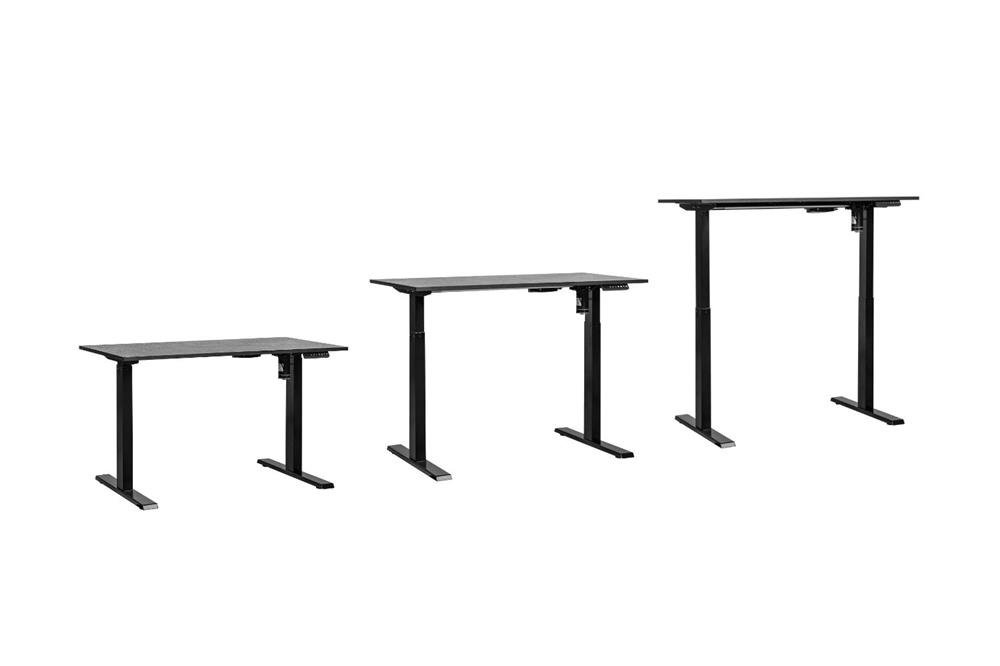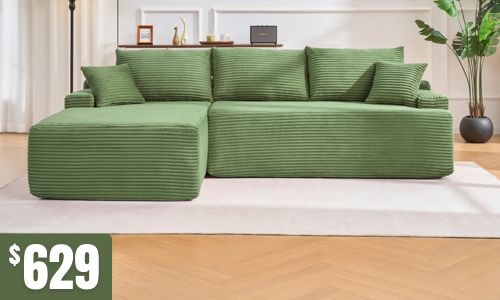Posts tagged with 'sit-stand desk'
 Are you tired of hunching over your desk all day? Poor posture can lead to a variety of health problems, including back pain, neck stiffness, and headaches. A sit-stand desk can be a game-changer when it comes to improving your posture and overall well-being.
Are you tired of hunching over your desk all day? Poor posture can lead to a variety of health problems, including back pain, neck stiffness, and headaches. A sit-stand desk can be a game-changer when it comes to improving your posture and overall well-being.
Understanding the Benefits of a Sit-Stand Desk
- Promotes a More Upright Posture: By allowing you to alternate between sitting and standing throughout the day, a sit-stand desk encourages a more upright posture. This can help to reduce strain on your back, neck, and shoulders. When sitting, ensure your back is straight, your feet are flat on the floor, and your thighs are parallel to the ground. When standing, ensure your feet are shoulder-width apart, your knees are slightly bent, and your shoulders are relaxed.
- Reduces Sedentary Behavior: Sitting for long periods can contribute to various health issues, including obesity, heart disease, and type 2 diabetes. A sit-stand desk encourages movement and helps to break up sedentary periods. Aim to stand for at least 30 minutes every hour. You can also try doing light stretches or walking in place while standing.
- Alleviates Back Pain: Chronic back pain can be debilitating. By promoting better posture and reducing muscle strain, a sit-stand desk can help to alleviate back pain and improve overall comfort. If you already have back pain, consult with a healthcare professional to determine if a sit-stand desk is right for you.
- Boosts Energy Levels: Standing can help to increase blood circulation and improve energy levels. This can make it easier to stay focused and productive throughout the day. You may notice that you feel less fatigued and more alert when using a sit-stand desk.
- Enhances Mood: Studies have shown that standing can have a positive impact on mood. By incorporating a sit-stand desk into your workday, you may experience a boost in your overall well-being. This can lead to increased job satisfaction and productivity.
- Improved blood circulation: Standing can help to improve blood flow, reducing the risk of blood clots and promoting overall cardiovascular health. This can be particularly beneficial for individuals who are at risk of developing blood clots or have existing circulatory problems.
- Enhanced cognitive function: Studies have shown that standing can improve cognitive function, including memory, attention, and problem-solving skills. This can be helpful for students, professionals, and anyone who needs to stay mentally sharp throughout the day.
- Weight management: Incorporating more standing into your day can help to burn calories and maintain a healthy weight. Standing can help to increase your metabolic rate and burn more calories compared to sitting.
- Reduced risk of chronic diseases: Regular physical activity, including standing, can help to reduce the risk of chronic diseases such as heart disease, stroke, and type 2 diabetes. A sit-stand desk can be a convenient way to incorporate more physical activity into your daily routine.
- Improved posture for children: Sit-stand desks can also be beneficial for children, helping to promote good posture and prevent back problems later in life. Children who use sit-stand desks may be less likely to develop slouching habits or experience back pain.
Tips for Using a Sit-Stand Desk Effectively
- Start Gradually: If you're new to using a sit-stand desk, start by gradually increasing the amount of time you spend standing. This will give your body time to adjust. Begin by standing for 15 minutes every hour and gradually increase the duration over time.
- Find the Right Height: Adjust your desk to a height that allows your elbows to be at a 90-degree angle when standing. This will help to ensure proper posture and reduce strain on your shoulders and wrists.
- Use a Footrest: If you're standing for extended periods, a footrest can help to relieve pressure on your legs and feet. A footrest can also help to improve your posture and prevent fatigue.
- Take Breaks: Even when using a sit-stand desk, it's important to take regular breaks to stretch and move around. Get up and move for a few minutes every 30 minutes to prevent stiffness and discomfort.
Choosing the Right Sit-Stand Desk
When selecting a sit-stand desk, consider the following factors:
- Height adjustment range: Ensure the desk can be adjusted to a comfortable height for both sitting and standing. The desk should be adjustable to accommodate people of different heights.
- Stability: The desk should be stable and sturdy, especially when standing. A wobbly desk can be dangerous and uncomfortable.
- Weight capacity: Check the weight capacity of the desk to ensure it can support your equipment and belongings. If you have a lot of equipment on your desk, you'll need a desk with a high weight capacity.
- Features: Some sit-stand desks offer additional features such as cable management, built-in power outlets, and adjustable keyboard trays. Consider which features are important to you and choose a desk that meets your needs.
A sit-stand desk can be a valuable investment in your health and well-being. By incorporating a sit-stand desk into your workday, you can improve your posture, boost your energy levels, and reduce your risk of chronic diseases.

In today's fast-paced work environment, productivity is a top priority for both employees and employers. While factors like skill set, motivation, and work culture play significant roles in enhancing productivity, the physical workspace also has a profound impact. One crucial element of any office setup is the desk. A well-designed and organized desk can contribute significantly to improving productivity levels. This article explores how office desks can help increase productivity and provide valuable insights on optimizing your workspace.
Ergonomic Design:
A desk that is ergonomically designed ensures that employees maintain proper posture and reduce strain on their bodies. Adjustability features like height-adjustable desks allow individuals to find the most comfortable position, reducing the risk of musculoskeletal issues such as back pain or repetitive strain injuries. When employees are comfortable, they can focus better on their tasks, leading to increased productivity.
Organisation and Efficiency:
An organized desk leads to an organized mind. A clutter-free workspace promotes concentration and minimizes distractions. When everything has a designated place and is easily accessible, employees spend less time searching for items, documents, or tools. Adequate storage solutions, such as drawers, shelves, or cable management systems, can help keep the desk tidy and facilitate efficient workflow. By eliminating unnecessary clutter, employees can streamline their work processes, leading to enhanced productivity.
Personalissation and Inspiration:
Office desks that allow for personalization can have a positive impact on productivity. Allowing employees to decorate their workspace with personal items or meaningful elements fosters a sense of ownership and identity. This personal touch can serve as a source of inspiration, motivation, and comfort, making the work environment more enjoyable and conducive to productivity.
Collaborative Spaces:
Collaboration is essential in many workplaces. Office desks that are designed for collaboration, such as shared workstations or open-plan layouts, can facilitate teamwork and idea sharing. When employees can easily communicate and collaborate with their colleagues, they can efficiently tackle complex tasks and find creative solutions, ultimately boosting overall productivity.
Technology Integration:
In today's digital era, technology plays a vital role in enhancing productivity. Office desks equipped with integrated power outlets, USB ports, and cable management systems make it easier for employees to connect and use their devices. Seamless integration of technology reduces the time spent on setting up equipment and dealing with tangled cords, allowing employees to focus more on their work and maximize productivity.
How can you optimise your desk for productivity?
To optimize your office desk for productivity, consider the following tips:
- Maintain a clutter-free environment by organising documents, supplies, and personal items. Use storage solutions like drawers, shelves, or desk organizers to keep everything in its place.
- Ensure your desk is ergonomically set up. Adjust your chair and desk height to maintain a comfortable posture, and invest in a supportive chair and ergonomic accessories like keyboard trays or monitor stands.
- Personalise your workspace with items that inspire and motivate you. Add plants, pictures, or meaningful decorations to create a positive and personalized atmosphere.
- Minimise distractions by positioning your desk away from high-traffic areas or noisy equipment. Use noise-canceling headphones if necessary.
- Take regular breaks and incorporate movement into your work routine. Consider using a standing desk or taking short walks to avoid prolonged sitting and improve blood circulation.
- Remember, the key is to create a workspace that supports your individual needs and preferences, enabling you to focus on your tasks and maximize productivity.
In conclusion, office desks play a crucial role in increasing productivity. By incorporating an ergonomic design, promoting organization and efficiency, allowing personalization, facilitating collaboration, and integrating technology, employees can optimize their workspace and enhance their overall productivity levels. A well-designed desk not only improves physical health and comfort but also creates a conducive environment for concentration, creativity, and collaboration. By implementing these strategies, employees can harness the full potential of their office desks and achieve higher levels of productivity.
Check our desk selections (fixed & sit-stand) for your optimal daily work productivity!

With the trend of sit-stand desks booming nowadays versus the traditional non-adjustable height desk, more people are questioning which desk is suitable for them. Of course, there is no “perfect desk.” Both designs have their pros and cons depending on your needs.
Here are 3 reasons why you should opt to get a sit-stand desk:
- Sit-Stand Desk Provides Flexibility
The desk gives you the flexibility to have that average fixed-height desk whenever you need and to stand up according to your height level comfortably. Not every fixed desk height is suitable for you and that makes your choice of desk limited. But, with height adjustable desk, you can change the height to your comfort level when sitting down and standing up.
Once you use the sit-stand desk, most likely you’ll have a preferred height that you use daily. It’s common nowadays for a sit-stand desk to have height save slots, such as our SUMMIT Height Adjustable Desk. Save your daily-use height or share the slot with your family member. Having the desk is an extended comfort for your partner/kids/family.
- Work-Health Balance
Is a sit-stand desk necessary? Having a sit-stand desk allows you to adjust your posture every now and then while working. Your muscle and joint get stiff after some time, especially your neck, shoulder, and lower back when sitting for a long time. Thanks to the height adjustability, you have the option to switch things up between sitting or standing based on your body's cues. Knowing you can easily get up and continue working is one of the best features of a sit-stand desk.

- Investing for Longer Term
A sit-stand desk is considered to be more expensive than the traditional fixed-height desk. This is due to added electric motor and components for the system to work. You also invest in a healthier lifestyle every day when you use it. So, with the option to be flexible anytime and the health benefits you can gain from a sit-stand desk, we think it’s worth the investment.
There are different price ranges for sit-stand desks depending on your needs and budget. Check our sit-stand desk selection that may suit you. Consider your height and the range of the sit-stand desk. Make sure the range fits you comfortably when you’re sitting down and standing up.







.jpeg)

 (3).jpeg)
